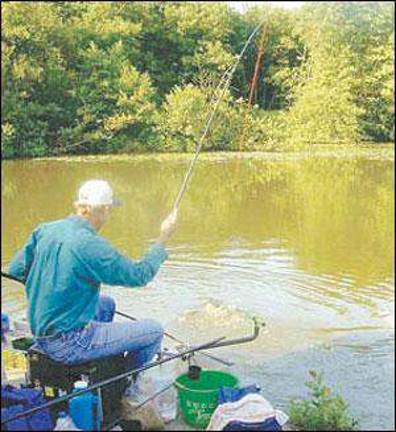Growth putting state's fishing spots off limits

State and anglers concerned as developers post more land SPRUCE CREEK - Allan Bright, owner of the Spruce Creek Outfitters fly fishing shop at the junction of Spruce Creek and the Little Juniata River, knows where some very large trout can be found. But he’s unlikely to suggest anyone fish there - not because he’s trying to keep it secret, but rather, because the fish are in a section of the Little Juniata posted against public fishing. It’s also at the center of a legal battle over the issue of public access. Bright and the state believe the Little Juniata is a ``navigable river’’ in terms of commerce, with public access guaranteed. The Spring Ridge Club contends it is not and that it has a right to post a 1.3-mile section of the river as off-limits. Across Pennsylvania, access to prime fishing spots is a growing concern to anglers and the Fish and Boat Commission because a growing number of property owners are barring anglers in a state where more than 80 percent of fishing opportunities are on private land. Anglers have often been to blame for no-trespassing signs going up on property where fishing was previously allowed. But development is also taking a toll, officials say, though no figures are available from the state on the extent of the lost fishing opportunities. This year, the commission quit stocking trout on all or sections of six streams because of landowner posting, including Bermudian Creek in Adams County, Powell Creek in Dauphin County and Eshelman and Londonland runs in Lancaster County. Almost always, poor angler behavior is to blame for the posting, said Dan Tredinnick, Fish and Boat Commission spokesman. On a recent weekday, Mike Boyle, a Pittsburgh attorney, was fishing for trout on the Little Juniata about 100 or so yards away from the section in dispute. ``Hopefully, people will behave themselves and private owners will allow them access,’’ said Boyle, who had just released an 11-inch brown trout, his first of the day. Melody Zullinger, executive director of the Pennsylvania Federation of Sportsmen’s Clubs, said development of farms and other open space is cutting access to good fishing. ``Places where you’ve been fishing since you were a kid now has a development on it and all the sudden, they don’t want you fishing in their back yards,’’ she said. Steve Sywensky, owner of Flyfisher’s Paradise in State College, said that in the past, asking for permission would sometimes get an angler past signs posted on farmers’ properties. ``Now I’m seeing, no trespassing, don’t even bother to ask,’’ he said. Deteriorating dams are also eliminating some fishing opportunities. If they deteriorate far enough, the state requires they be drained, Tredinnick said. That happened last summer at the 62-acre Ronald J. Duke Lake at Ryerson Station State Park in Greene County and in 2004 at the 91-acre Dutch Fork Lake in Westmoreland County. A half-dozen other lakes around the state are either drained or significantly drawn down because of dam safety concerns. “If the water goes away in its entirety, that’s a loss of access as well,’’ Tredinnick said. The commission has identified more than $80 million in needed repairs for dams it manages but does not have enough money to repair them all. If there is an epicenter of concern over access, it is in Erie County, where the popularity of steelhead fishing on Lake Erie tributaries has exploded in recent years. A fish commission study several years ago placed the value of Erie’s steelhead industry at $9.5 million annually to Erie County. ``When it comes to the steelhead, access is probably the No. 1 problem,’’ said Gary Heubel, an officer and former president of the Pennsylvania Steelhead Association and owner of Poor Richard’s Bait and Tackle shops in the Erie County towns of Fairview and North East. ``The posting of the creeks is getting worse and worse and the other sections that aren’t getting posted are getting more pressure and it’s getting like a domino effect,’’ Heubel said. The state plants steelhead as smolts _ juvenile fish _ in about a dozen tributaries feeding Lake Erie. They spend part of their lives in the lake and swim up the tributaries in the fall and spring, when anglers pursue them. Landowners are restricting access because of littering or poor angler behavior, simply not wanting people on their property, and in some cases because they can lease their land to guides who will pay for fishing access, according to Tredinnick and others interviewed. The fish commission is working to secure access in Erie by purchasing property or easements, a model it hopes could be used elsewhere, Tredinnick said. The commission, whose $40 million operating budget is funded solely by license and boat registration fees, recently created a special Lake Erie stamp with angler support to raise money for acquiring or improving public access. The program is in the early stages, Tredinnick said, and the commission is developing guidelines for how much to pay, a figure that will vary depending on how valuable access to a particular parcel is deemed to be. The fund has about $900,000 and the commission has committed $200,000 to purchase land valued at about $900,000 along Trout Run, one of Erie’s tributaries. Other government agencies and private groups are chipping in, Tredinnick said. ``I know one thing, there isn’t any more land being created,’’ said Sywensky, the fly shop owner.